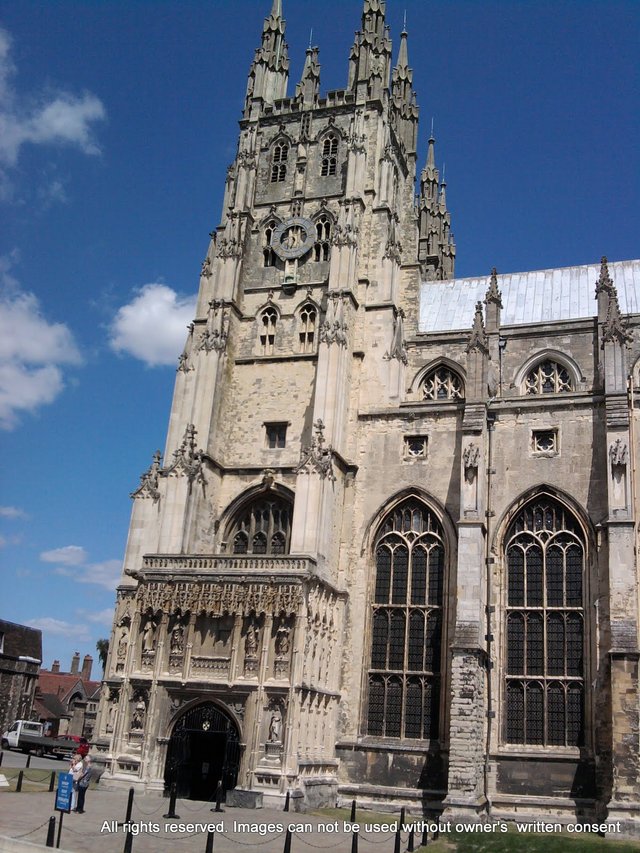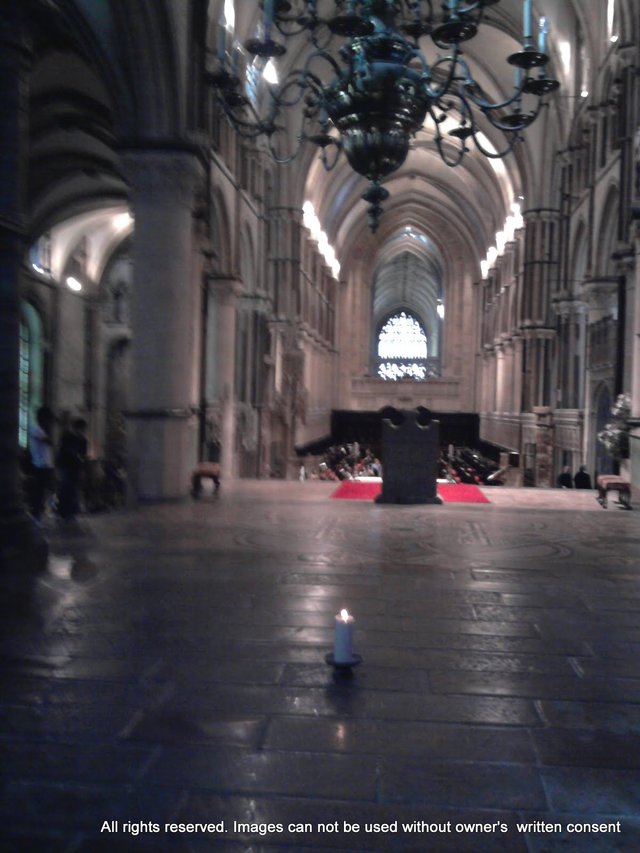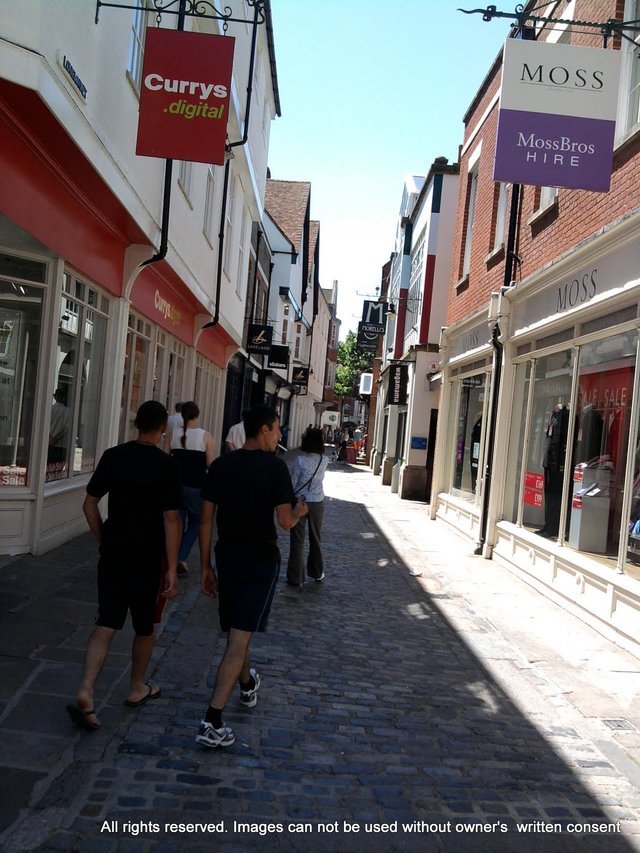Canterbury. Does the name sound familiar? This place has been inhabited since prehistoric times I was told and has a multitude of buildings, historical sites and tourist attractions to hold your attention.
Canterbury Cathedral – An amazing place, enormous, filled with history. I saw the tomb of the Black Knight. Not A Black Knight, THE BLACK KNIGHT 🙂

Some of the historical structures that still remain, include a city wall founded in Roman times and rebuilt in the 14th century, the ruins of St Augustine’s Abbey and a Norman castle, and I believe, the oldest school in England, The King’s School. Some of the more up to date structures include the University of Kent, Canterbury Christ Church University, the University College for the Creative Arts, The American University – Canterbury, the Marlowe Theater, and the St Lawrence Ground, home to Kent County Cricket Club.
It was few hours drive from my base of operations in Huntingdon but on the following pages you will see some of the many pictures I was able to take. What a great place, full of history and the drive there wasn’t bad either as the country side is lush and green with rolling terrain and stops along the way for coffee and side trips.
While I was touring Canterbury I had to walk through the Cathedral if for no other reason than it dominated the area. You can see it from quite a distance and it looks like it has been there for centuries. It is huge and I was told is the oldest cathedral still in operation in England. From what I was able to learn it appears to have been in operation in one form or another since the 12th century. There is even a claim that it is the oldest cathedral in the English speaking world. Whatever the claims, the place is quite impressive.
As I walked through the entryway and paid my fee I noticed right away that the exterior is clean and well maintained. I walked the grounds, took some pictures and read a few of the signs erected around related to history. There is also an open area in the center of the church, the interior grounds I suppose which is also well maintained and I walked it as well. The carvings, inscriptions and architecture are just as impressive as they were throughout the entire cathedral.
When I arrived a major renovation was underway and there was scaffolding in various places and some areas were off limits.

I think I’ve mentioned this before but the skill that went into building these structures is impressive. If this isn’t craftsmanship, I don’t know what is. And it was all accomplished without the modern miracles we have today. This is the type of structure that has been able to withstand the ravages of what? Over a thousand years? Armies, The Whims of Kings and their choices of religion forced on the people etc. It’s amazing it has managed to survive, even after the bombings England endured during the 2nd world war.
The story goes that volunteers watched the place and put out fires around the clock to ensure German bombers didn’t destroy it.
If you aren’t impressed by the exterior the enormity of it striking once you enter. The pillars running down both sides are absolutely enormous and an amazing feat of engineering by themselves. 597St Augustine arrived in Kent and soon established the first Cathedral
You can see pictures of the interior stained glass windows, people worshiping and the architecture. It is remarkably well lit considering the size of the place and the relatively few lights I saw as I wandered around the place. The design allows light to stream in and illuminate the place quite well. Something I found interesting about the cathedrals in England was there are many famous or rich people entombed in them. The one I remember from this place is The Black Knight. Not A black knight …. THE Black Knight. Or at least that is what I came away with after reading the plaque on the tombe.
 related to the cathedral if you’re interested:
related to the cathedral if you’re interested:
Here are some facts from I hunted down
597 St Augustine arrived in Kent and soon established the first Cathedral1
070-1077 Cathedral rebuilt by Archbishop Lanfranc
1098-1130 New Quire built over a Crypt (present Western Crypt)
1170 Thomas Becket murdered in the Cathedral
1175-1184 Quire rebuilt. Eastern Crypt, Trinity and Corona Chapels added (all as seen today)
1220 Becket’s body placed in new Shrine in Trinity Chapel
1377-1405 Lanfranc Nave demolished and rebuilt as seen today; Cloister vaulting inserted
1450 Pulpitum Screen constructed
1498 Bell Harry Tower extended and the Cathedral largely complete as seen today
1538 Becket’s Shrine destroyed by Henry VIII
1540 Monastery dissolved by royal command
1541 New Foundation of Dean and Chapter established
1660-1704 Repair and refurbishing after Puritan damage
1834 North West tower rebuilt1954Library rebuilt, repairing War damage
1986 Altar of the Sword’s Point (Martyrdom) restored
1988 Compass Rose placed in the Nave
2000International Study Centre opened in the Precincts
Wizard of Where